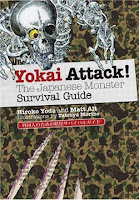 Author: Eiji Yoshikawa
Author: Eiji Yoshikawa
Translator: William Scott Wilson
U.S. publisher: Kodansha
ISBN: 9784770026095
Released: October 2000
Original release: 1941
Taiko: An Epic Novel of War and Glory in Feudal Japan is the second work by Eiji Yoshikawa that I have read. Taiko is probably Yoshikawa’s best known work in English following Musashi, another of his epics, which I have also read. Yoshikawa was a prolific author in Japan, particularly respected as a historical novelist, but only four of his works are currently available in English, the other two being his telling of The Tale of Heike and his memoir Fragments of a Past. Taiko was first released in Japan in 1941. The English translation by William Scott Wilson was initially published in 1992 by Kodansha International and then again in 2000. Like Musashi, the English edition of Taiko has been abridged from the original. I’m not entirely sure how long Taiko was to begin with, but the shortened version of the novel is nothing to ridicule with well over nine hundred pages of dense text.
Taiko begins in the year 1536. At the time Hiyoshi, later known as Toyotomi Hideyoshi, was only a troublesome young boy the age of six. The novel follows him and the tumultuous state of Japanese society as he becomes one of Oda Nobunaga’s most trusted retainers. Nobunaga is extraordinarily ambitious and ruthless in his methods striving to unite Japan under his own banner. It’s a dream that can’t be realized without the aid and efforts of Hideyoshi and Tokugawa Ieyasu, who would go on to found the Tokugawa Shogunate. The prospect of unifying Japan is not an easy one. After the collapse of the Ashikaga Shogunate, the country was thrown into a state of chaos with many clans fighting each other in order to claim the power to rule.
The most difficult thing about reading Taiko is the sheer number of characters involved in the story. Someone might be thoroughly introduced only to die or otherwise meet fate a few pages later. An added challenge to this is that many of the characters undergo multiple name changes as the novel progresses. Taiko is divided into ten books. At the beginning of each of these sections, a brief list of prominent people and places is given. This is very useful, but a more comprehensive and complete register would have been even more helpful. Some familiarity with feudal era Japan would be extremely valuable for or perhaps even expected of someone undertaking to read Taiko. It’s not always clear why certain people or references that are made are important without a basic understanding of the the historical context of the story. The constantly shifting politics and alliances can likewise be difficult to follow.
Taiko is described as an epic for good reason. It is a long and complicated novel, capturing the end of the Warring States period and the following attempt at the political unification of Japan. Many of the characters pull off some very impressive diplomatic and military maneuvers. The near constant state of war allows Yoshikawa to write brilliant battle sequences and when there isn’t fighting there is plenty of political intrigue to keep everyone occupied. Taiko provides an immersive, and at times even inspiring, experience of sixteenth century Japan. However, the novel’s length, even abridged, is certainly felt. There really isn’t much character development, although people might exhibit sudden changes in behavior, and even the narrative arc comes across as somewhat flat. Perhaps Yoshikawa was too constrained by the historical realities of the period. But there’s some great stuff in here, too, and I’m glad I took the time to read Taiko.


